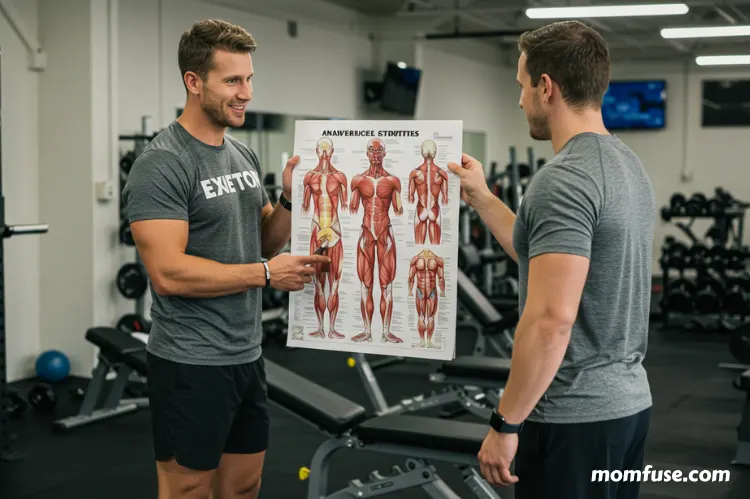Becoming a gym trainer is about far more than just having a passion for fitness. It requires discipline, communication skills, technical knowledge, and the ability to inspire others. Gym trainers play a crucial role in helping people improve their health, overcome physical challenges, and stay motivated on their journey toward wellness.
While the fitness industry has grown rapidly, the demand for qualified and well-rounded professionals remains high. Trainers must be equipped not only with proper certifications but also with the soft skills and attitude that foster long-term client relationships. If you’re wondering whether you’re cut out for the role, it starts with understanding what truly makes a successful trainer.
Strong Communication and Coaching Skills

Clear communication is foundational to effective training. Gym trainers need to convey complex instructions in simple terms, adapting their style to suit each client’s experience level and goals. Whether correcting form, explaining a routine, or offering motivation, how you speak matters as much as what you say.
Great trainers also know how to listen. They pay attention to body language, emotional cues, and verbal feedback to adjust workouts accordingly. Emotional intelligence—the ability to read and respond to people—is just as vital as technical expertise.
Effective coaching also involves nonverbal reinforcement, timely encouragement, and constructive correction. Building rapport helps establish trust, which in turn improves adherence to training plans and client satisfaction.
Deep Knowledge of Human Movement and Physiology

Understanding anatomy, biomechanics, and exercise science is essential for creating safe and effective workout programs. Without this foundation, it’s easy to misguide clients or cause unintentional harm. Trainers should know how different muscle groups function, how injuries develop, and how to scale intensity for all fitness levels.
A good trainer also recognizes postural imbalances and compensatory movement patterns. That’s where corrective exercise certification programs found at sites such a brookbushinstitute.com can offer an edge. These advanced certifications teach evidence-based techniques to address muscular dysfunction and reduce injury risk—skills that elevate the trainer’s value in both private and clinical settings.
Being able to assess movement and apply corrective strategies enhances the trainer’s credibility and enables more personalized programming for a wide range of clients.
A Commitment to Ongoing Learning
The fitness field is always evolving. New research, training methodologies, and tools constantly reshape the way professionals approach health and exercise. To stay relevant and effective, a successful trainer embraces lifelong learning and adapts to changes in the industry.
Continuing education, whether through certifications, workshops, or peer networking, ensures trainers stay sharp. Clients benefit from updated knowledge, while trainers build their reputation through innovation and mastery. Complacency has no place in a role that involves the well-being of others.
Ongoing learning also includes staying aware of legal considerations, liability risks, and new client technologies like wearables or app integrations.
Patience and the Ability to Motivate

No two clients progress at the same rate. Some will struggle with motivation, while others may hit plateaus or become discouraged. An effective gym trainer understands these challenges and responds with encouragement rather than criticism. Patience is what allows trainers to meet clients where they are, and motivation is what moves them forward.
Good trainers celebrate small wins. They focus on effort as much as results and recognize that transformation isn’t just physical—it’s emotional and psychological. The best trainers build confidence by fostering a positive, safe, and judgment-free environment.
Trainers must know how to tailor their motivational style to fit each personality, pushing when needed and stepping back when appropriate. This fine balance often determines client retention and satisfaction.
Professionalism and Ethical Standards
Trainers must maintain high standards of professionalism at all times. This includes punctuality, confidentiality, respect, and appropriate boundaries. Clients often share sensitive information about their health, habits, and self-esteem. Maintaining their trust is essential.
Ethical behavior also means providing evidence-based guidance, knowing when to refer clients to medical or nutrition experts, and never making unfounded promises. Integrity is the foundation of a trainer’s reputation and long-term success.
Being professional also means holding yourself accountable. Whether it’s arriving prepared, maintaining clean training environments, or dressing appropriately, every detail contributes to your credibility and the overall client experience.
Physical Stamina and Self-Care

Though mental and interpersonal skills are critical, physical readiness can’t be overlooked. Trainers are often on their feet for long hours, demonstrating movements, spotting clients, and staying engaged during physically demanding sessions. Without stamina and proper self-care, burnout becomes a real risk.
Fitness professionals must prioritize their own well-being to support others effectively. Adequate rest, nutrition, recovery, and mental health practices help sustain energy levels and enthusiasm. Clients draw inspiration from how trainers manage their own health—your habits can influence theirs more than your words ever will.
A trainer who embodies balance and resilience serves as a real-life example of what long-term wellness looks like, making their guidance far more impactful.
Being a great gym trainer means blending passion with purpose, and skill with service. By developing the physical, emotional, and intellectual tools outlined above, aspiring professionals can build careers that not only help others thrive—but grow personally in the process. If you’re willing to invest in your development and lead by example, the fitness industry has room for you to make a real impact.
Read Next: Top Strategies for Successful and Sustainable Weight Loss


